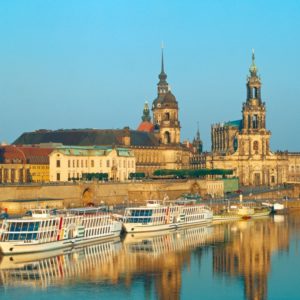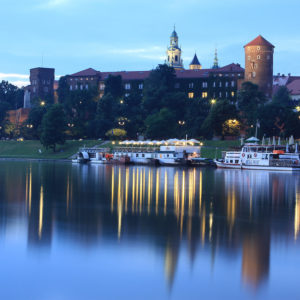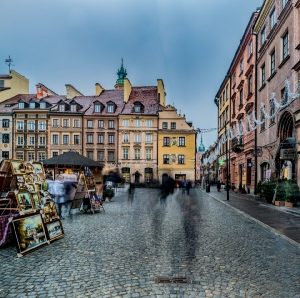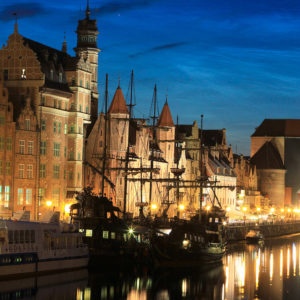Video courtesy of Visit Krakow Tourism
The history of Poland is a record of the wonder of human resilience. Few people in the world have survived so many threats to their mere existence. Poland has suffered invasions, terror and genocide. For over 100 years Poland lost its national identity and disappeared from the map of Europe, engulfed by the invading powers of Russia and Germany. Today, though it occupies barely a fraction of its original boundaries, it is still one of modern Europe’s largest countries, with a wealth of history, culture and natural beauty for the visitor to see and experience.
King Zygmunt III Waza (Sigismund III Vasa) designated Warsaw the capital of Poland in 1596 and gave the city new life for growth. The city flourished until well into the 17th century, after which a series of natural disasters coupled with an invasion by the Swedish brought about the city’s destruction and a depletion of its population. Culture and commerce later flowered during the Enlightenment. A constitution was ratified on May 3rd, 1791 which gave the state a legal basis, but the nation found it impossible to maintain its sovereignty. After the fall of the insurrection under the leadership of Tadeusz Kosciuszko in 1795, Poland disappeared from the map of Europe. Warsaw found itself in the Prussian partition and subsequently became the capital of the Grand Duchy of Warsaw created by Napoleon. Following 1815 it became the capital of the Kingdom of Poland, which was subservient to Russia. The beginning of Warsaw’s story can be found throughout Old Town, with its Gothic churches, defensive walls, and fairy tale facades of the Renaissance and Baroque tenement houses. It is a tragedy that the Nazis destroyed Warsaw’s city charter, a magnificent historical document, but the Old Town complex was painstakingly reconstructed after the war.
The renowned Royal Route starts at Castle Square and travels along the academic church of St. Anne, whose oldest part dates from the 15th century. Next to it is the building in which Maria Sklodowska-Curie carried out her first experiments in physics. The Adam Mickiewicz Monument embellishes a beautiful, fenced-off square. The bard’s gaze is turned towards Victory Square and the Saxton Garden.
Kazimierz Dolny is one of Poland’s most picturesque towns, with antique charm, Renaissance houses, popular Market Square, old churches, granaries, and the ruins of a castle stronghold overlooking the town. A small country manor, Frederic Chopin’s birthplace is surrounded by a colourful flower garden and beautiful, romantic park. In the summer, concerts are held in the garden for the public and some of the world’s finest musicians perform his music in this wonderful setting.
During the 19th century, Krakow was made part of the province of Galicia achieving considerable autonomy at the interlude of independence following World War I, ending in 1939 with the Nazi occupation. Governor Hans Frank then authorized the arrest and deportation of many local professors as well as all occupants of the Krakow ghetto to the nearby concentration camp of Auschwitz, a name which even today, fifty years later, brings images of genocide and torture to mind. In 1978, the election of Pope John Paul II, at the time Cardinal Wojtyls, the Archbishop of Krakow, gave renewed attention to this historic city. Most recently, both local and international investment has enabled the city to claim its rightful proud and important place in central Europe.
Wielczka, the “underground cathedral” only ten miles southeast of Krakow, is where the 1000-year-old salt mines are located. Salt was discovered here in the 11th century and thereafter mining rights and incomes were strictly controlled by the crown.
Gdansk has always been inextricably connected to water, both by sea and by rivers. It was a major port centre, and Długie Pobrzeże Street is still a key location on every visitors’ map. It is also the departing harbour for tourist ships that cruise to Westerplatte, around the bay and to Hel.
Spring can also be quite cold from March to May, and in early April there can be late cold waves with snow showers; in April and early May, cold days alternate with the first warm days, while from mid-May the temperature becomes steadily pleasant, with highs around 15/20 °C (59/68 °F), and sometimes above.
Summer temperatures are mild and pleasantly warm from June to August: the average daily temperatures are around 17/18 °C (63/64 °F). The Baltic coast, which during winter was the mildest zone, in summer becomes the coolest: here highs in July and August are around 20/21 °C (68/70 °F), while they gradually increase towards the south, and reach 23/24 °C (73/75 °F) in the centre and south of the country. Summer is also the rainiest season.
Showing all 4 results




